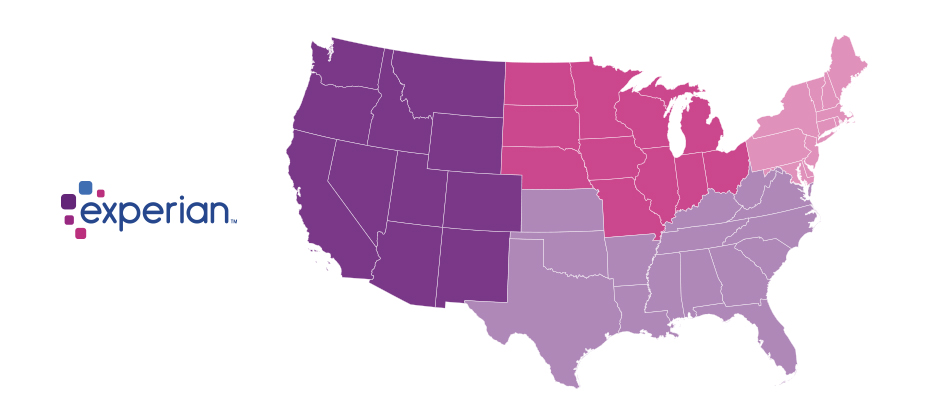Latest Posts

In the credit game, the space is deep and diverse. From super prime to prime to subprime consumers, there is much to be learned about how different segments are utilizing credit and navigating the financial services arena. With 78 percent of full-time workers saying they live paycheck-to-paycheck and 71 percent of U.S. workers responding that they live in debt, it is not surprising a sudden life event can plunge a solid credit consumer from prime to subprime within months. Think lost job, divorce or unexpected medical bill. This population is not going away, and they are seeking ways to make ends meet and obtain finances for needs big and small. In many instances, alternative credit data can shed a light on new opportunities for traditional lenders, fintech players and those in the alternative financial space when servicing this specific consumer segment. In a new study, Clarity analyzed the trends and financial behavior of subprime loan users by looking at application and loan data in Clarity’s database, as well as overlaying VantageScore® credit score insights from Experian from 2013 to 2017. Clarity conducted this subprime trends report last year, but this is the first time it factored in VantageScore® credit score data, providing a different lens as to where consumers fall within the credit score tiers. Among the study highlights: Storefront single pay loan customers are becoming more comfortable with applying for online loans, with a growing percentage seeking installment products. For the first time in five years, online single pay lending (payday) saw a reduction in total credit utilization per customer. Online installment, on the other hand, saw an increase. While the number of online installment loans increased by 12 percent and the number of borrowers by only 9 percent, the dollar value grew by 30 percent. Online installment lenders had the greatest percentage increase in average loan amount. California and Texas remain the most significant markets for online lenders, ranking first and second for five years in a row due to population size. There has also been growth in the Midwest. The in-depth report additionally delves into demographics, indicators of financial stability among the subprime market and comparisons between storefront and online product use and performance. “Every year, there are more financial lenders and products emerging to serve this population,” said Andy Sheehan, president of Clarity Services. “It’s important to understand the trends and data associated with these individuals and how they are maneuvering throughout the credit spectrum. As we know, it is often not a linear journey.” The inclusion of the VantageScore® credit score showcased additional findings around prime versus subprime financial behaviors and looks at generational trends. Access Full Report

With 16.7 million reported victims of identity fraud in 2017 (that’s 6.64 percent of the U.S. population), it was another record year for the number of fraud victims. And as online and mobile transaction growth continued to significantly outpace brick-and-mortar growth, criminal attacks also grew rapidly. This past year, we saw an increase of more than 30 percent in e-commerce fraud attacks compared with 2016. As we’ve done over the past three years, Experian® analyzed millions of online transactions to identify fraud attack rates for both shipping and billing locations across the United States. We looked at several data points, including geography and IP address, to help businesses better understand how and where fraud is being perpetrated so they can better protect against it. The 2017 e-commerce fraud attack rate analysis shows: Delaware and Oregon continue to be the riskiest states for both billing and shipping fraud. Delaware; Oregon; Washington, D.C.; Florida; and Georgia are the top five riskiest states for billing fraud. Delaware, Oregon, Florida, New York and California are the top five riskiest states for shipping fraud, accounting for 50 percent of total fraud attacks. South El Monte, Calif., is the riskiest city overall, with an increase in shipping fraud of approximately 230 percent. Shipping fraud most often occurs near major airports and seaports due to reshippers and freight forwarders that receive domestic goods and often send them overseas. When a transaction originates from an international IP address, shipping fraud is 6.7 times likelier than the average, while billing fraud becomes 7.1 times likelier. Where is e-commerce fraud happening? Typically, the highest-risk areas for fraud are in ZIP™ codes and cities near large ports of entry or airports. These are ideal locations to reship fraudulent merchandise, enabling criminals to move stolen goods more effectively. Top 10 riskiest billing ZIP™ codes Top 10 riskiest shipping ZIP™ codes 97252 Portland, OR 97079 Beaverton, OR 33198 Miami, FL 33122 Miami, FL 33166 Miami, FL 91733 South El Monte, CA 33122 Miami, FL 97251 Portland, OR 77060 Houston, TX 97250 Portland, OR 33195 Miami, FL 33166 Miami, FL 97250 Portland, OR 97252 Portland, OR 97251 Portland, OR 33198 Miami, FL 33191 Miami, FL 33195 Miami, FL 97253 Portland, OR 33192 Miami, FL Source: Experian.com Source: Experian.com What’s more, many of the riskiest ZIP™ codes and cities experience a high volume of transactions originating from international IP addresses. In fact, the top 10 riskiest ZIP codes overall tend to experience fraudulent activity from numerous countries overseas, including China, Venezuela, Taiwan and Hong Kong, and Argentina. These fraudsters tend to implement complex fraud schemes that can cost businesses millions of dollars in fraud losses. Additionally, the analysis shows that traffic coming from a proxy server — which could originate from domestic and international IP addresses — is 74 times riskier than the average transaction. The problem The increase in e-commerce fraud attacks shouldn’t come as a huge surprise. The uptick in data breaches, merchants’ continued adoption of EMV-enabled terminals to protect against counterfeit card fraud and the abundance of consumer data on the dark web means that information is even more accessible to criminals. This enables them to open fraudulent accounts, take over legitimate accounts and submit fraudulent transactions. Another reason for the increase is automation. In the past, criminals needed a strong understanding of fraud methods and technology, but they can now bring down an entire organization by simply downloading a file and automating the submission of thousands of applications or transactions simultaneously. Since fraudsters need to make these transactions appear as normal as possible, they often leverage the cardholder’s actual billing details with slight differences, such as e-mail address or shipping location. Unfortunately, the mass availability of compromised data and the abundance of fraudsters makes it increasingly challenging to identify and separate legitimate customers from attackers across the country. Because of the widespread prevalence of fraud and data compromises, we don’t see billing fraud concentrated in just one region of the country. In fact, the top five states for billing fraud make up only about 18 percent of overall fraud attacks. Top 5 riskiest billing fraud states Top 5 riskiest shipping fraud states State Fraud attack rate State Fraud attack rate Delaware 93.4 Delaware 195.9 Oregon 86.1 Oregon 170.1 Washington, D.C. 46.5 Florida 45.1 Florida 39.2 New York 37.3 Georgia 31.5 California 32.6 Source: Experian.com Source: Experian.com Prevention and protection need to be the priority As businesses get a better understanding of how and where fraud is perpetrated, they can implement proactive strategies to detect and prevent attacks, as well as protect payment information. While no one single strategy can address the entire scope of fraud, there are advanced data sets and technology — such as device intelligence, behavioral and physical biometrics, document verification and entity resolution — that can help businesses make better fraud decisions. Fortunately, consumers can also play a major role in safeguarding their information. In addition to regularly checking their credit reports and bank/credit card statements for fraudulent activity, consumers can limit the data they share on social networking sites, where attackers often begin when perpetrating identity fraud. While we continue to help both organizations and consumers limit their exposure to e-commerce fraud, we anticipate that criminals will attempt more sophisticated fraud schemes. But businesses can stay ahead of the curve. This comes down to having a keen understanding of how fraud is being perpetrated, as well as leveraging data, technology and multiple layered strategies to better recognize legitimate customers and make more precise fraud decisions. View our e-commerce fraud heat map and download the top 100 riskiest ZIP codes in the United States. Experian is a nonexclusive full-service provider licensee of the United States Postal Service®. The following trademark is owned by the United States Postal Service®: ZIP. The price for Experian’s services is not established, controlled or approved by the United States Postal Service.

Optimizing your collections With a maximized approach to collections, you can see an uplift in performance of 5% to 30% in Key Performance Indicators against traditional techniques. Here are some suggestions for optimizing your strategies: Consider every combination of actions. Understand the tradeoffs between the different actions, which are forced by constraints. Choose the best set of actions to fit within the constraints. Maximize your collections efforts by knowing your customers better, segmenting and targeting your approach more effectively, and automating as much as possible. Learn more in our white paper Collections Optimization. Download now

Managing your customer accounts at the identity level is ambitious and necessary, but possible Identity-related fraud exposure and losses continue to grow. The underlying schemes have elevated in complexity. Because it’s more difficult to perpetrate “card present” fraud in the post–chip-and-signature rollout here in the United States, bad guys are more motivated and getting better at identity theft and synthetic identity attacks. Their organized nefarious response takes the form of alternate attack vectors and methodologies — which means you need to stamp out any detected exposure point in your fraud prevention strategies as soon as it’s detected. Experian’s recently published 2018 Global Fraud and Identity Report suggests two-thirds, or 7 out of every ten, consumers want to see visible security protocols when they transact. But an ever-growing percentage of them, fueled in no small part by those tech-savvy millennials, expect to be recognized with little or no friction. In fact, 42 percent of the surveyed consumers who stated they would do more transactions online if there weren’t so many security hurdles to overcome were — you guessed it — millennials. So how do you implement identity and account management procedures that are effective and, in some cases, even obvious while being passive enough to not add friction to the user experience? In other words, from the consumer’s perspective, “Let me know you know me and are protecting me but not making it too difficult for me when I want to access or manage my account.” Let’s get one thing out of the way first. This isn’t a one-time project or effort. It is, however, a commitment to the continued informing of your account management strategies with updated identity intelligence. You need to make better decisions on when to let a low-risk account transaction (monetary or nonmonetary) pass and when to double down a bit and step up authentication or risk assessment checks. I’d suggest this is most easily accomplished through a single, real-time access point to myriad services that should, at the very least, include: Identity verification and reverification checks for ongoing reaffirmation of your customer identity data quality and accuracy. Know Your Customer program requirements, anyone? Targeted identity risk scores and underlying attributes designed to isolate identity theft, first-party fraud and synthetic identity. Fraud risk comes in many flavors. So must your analytics. Device intelligence and risk assessment. A customer identity is no longer just their name, address, Social Security number and date of birth. It’s their phone number, email address and the various devices they use to access your services as well. Knowing how that combination of elements presents itself over time is critical. Layered passive or more active authentication options such as document verification, biometrics, behavioral metrics, knowledge-based verification and alternative data sources. Ongoing identity monitoring and proactive alerting and segmentation of customers whose identity risk has shifted to the point of required treatment. Orchestration, workflow and decisioning capabilities that allow your team to make sense of the many innovative options available in customer recognition and risk assessment — without a “throw the kitchen sink at this problem” approach that will undoubtedly be way too costly in dollars spent and good customers annoyed. Fraud attacks are dynamic. Your customers’ perceptions and expectations will continue to evolve. The markets you address and the services you provide will vary in risk and reward. An innovative marketplace of identity management services can overwhelm. Make sure your strategic identity management partner has good answers to all of this and enables you to future-proof your investments.

Identify your customers to spot fraud. It’s a simple concept, but it’s not so simple to do. In our 2018 Global Fraud and Identity Report, we found that consumers expect to be recognized and welcomed wherever and whenever they do business. Here are some other interesting findings regarding recognition and fraud: 66% of consumers surveyed appreciate seeing visible security when doing business online because it makes them feel protected. 75% of businesses want security measures that have little impact on consumers. More than half of businesses still rely on passwords as their top form of authentication. Even though you can’t see your customers face-to-face, the importance of being recognized can’t be overemphasized. How well are you recognizing your customers? Can you recognize your customers?

From malware and phishing to expansive distributed denial-of-service attacks, the sophistication, scale and impact of cyberattacks have evolved significantly in recent years. Mitigate risk by employing these best practices: Manage third-party risks. Regularly review response plans. Opt in to software updates. Educate, educate, educate. Organizations must adopt stronger, more advanced technical solutions to protect sensitive data. While enhanced technology is necessary for defending against data breaches, it can’t work independently. Learn more

While it’s important to recognize synthetic identities when they knock on your door, it’s just as important to conduct regular portfolio checkups. Every circumstance has unique parameters, but the overarching steps necessary to mitigate fraud from synthetic IDs remain the same: Identify current and near-term exposure using targeted segmentation analysis. Apply technology that alerts you when identity data doesn’t add up. Differentiate fraudulent identities from those simply based on bad data. Review front- and back-end screening procedures until they satisfy best practices. Achieve a “single customer view” for all account holders across access channels — online, mobile, call center and face-to-face. With the right set of analytics and decisioning tools, you can reduce exposure to fraud and losses stemming from synthetic identity attacks at the beginning and across the Customer Life Cycle. Learn more

Millions of Americans placed a credit freeze or restricted access to their credit file in recent months to keep identity thieves at bay. Credit freezes keep any new creditors from seeing a consumer’s credit file, which makes it nearly impossible for hackers to open new accounts fraudulently. But a credit freeze can also be problematic for consumers when they are finally ready to consider new credit products and loans. We’ve heard from credit unions and other lenders about sharing best practices to help streamline the process for consumers who want to permanently or temporarily lift the freeze to apply for a legitimate line of credit. Following are the three ways to help clients with a frozen Experian report quickly and efficiently allow access. Unfreeze account: This will remove the freeze entirely from the consumer’s credit report so that it may be accessed with the consumer’s permission. To do this, the consumer will need to contact Experian online, by phone or mail and provide his unique personal identification number (PIN) code—provided when the consumer froze his account—to un-freeze the report. Thaw account: An action that will temporarily remove the freeze for a timeframe determined by the consumer. The consumer should contact Experian online, by phone, or mail and provide his unique PIN code to thaw the report. Grant a creditor one-time access: A consumer may provide a different/temporary PIN to a lender to access the report just once. The PIN can be emailed to the consumer, presented on screen if the consumer is online, or provided on the phone or by mail. Typically, a consumer’s request to thaw or un-freeze his credit file online or by phone will thaw or un-freeze the file within minutes. Download Checklist Experian can be reached: Online: www.experian.com/freeze Phone: 888-397-3742 Mail: P.O. Box 9554, Allen, Texas 75013 Remember, if a consumer has a frozen credit file with all three credit reporting agencies, he will need to contact each agency to enable access to his report.

Trended attributes and consumer lending Digging deeper into consumer credit data can help provide new insights into trending behavior, providing more than just point-in-time credit evaluation. The information derived through trended attributes can help you understand your customers’: Payment rates and account migration behavior. Slope of balance changes. Delinquency patterns over time. Today’s consumer lending environment is more dynamic and competitive than ever. Trended attributes can give additional lift in your segmentation strategies and custom models and provides a high-definition lens that opens a world of opportunity. Learn more

As the world celebrates International Women's Day on March 8, we want to shine a light on a few of the female leaders who shape, inspire and grow Experian. From sales to strategy, to people management, big data and beyond, women are a driving force in every industry - and their stories deserve to be told. Throughout the week, meet some of the "Women of Experian." Today, we feature Laurie Jerome, an executive leading Experian's initiatives around talent, diversity and inclusion. Learn about her career journey, learnings and sources of inspiration as it pertains to leadership. What do you do at Experian? What’s a typical day like for you? I lead all talent initiatives across North America, (6,000 employees located across 24 offices and over 900 remote workers). In addition, it’s critical that we partner with our global talent teams for alignment and integration of brand, culture, leadership and succession management. In very simple terms, we are here to create a great employee experience and provide leaders with the tools, training and resources to do just that. The overall outcome is to ensure our workforce is engaged and retained. How do you motivate yourself and stay motivated? I have a motto that “If you love what you do, then you’ll never have to work a day in your life.” I found my niche early on and although I can’t say that every day I get to do what I love, I balance my day with networking, workouts and family. Work-life integration is so important for anyone who works full time. My days are full, but if they include some of those balanced elements then I feel fulfilled. One of my favorite things to do is pay it forward to others who are growing their career. I have several mentees and find so much joy in giving back and learning from them. I think it’s become more real to me now having two sons (one a recent grad and one in his second year at UCLA). With such a competitive environment for candidates and employers, I find it so rewarding to help others navigate their way. What are the most important values you demonstrate as a leader? I would have to say life-long learning no matter where you are in your career. With that comes humility and transparency in sharing what you know, and probably most importantly being vulnerable and confident enough to share what you don’t. I love to surround myself with others who bring very different skills, values and experiences to the team. It truly requires time and attention to ensure your team has a strong understanding of one another and values such differences. My team meets every other week and although some are virtual and in other locations, I insist on using video conference to keep us visually in touch and connected. There’s something about being present that matters. Oh, and speaking of presence, another important value I have is being available to my team and others no matter how busy I am. Well, I think I went over the request of providing the MOST important however they are all so related. What are some patterns you’ve noticed over the years about women at work, and things they could be doing better to advance their careers? The topic of mentoring comes up quite often. Everyone is looking for someone they can turn to and seek advice and council with on a range of topics. I think it’s great, but one piece of advice I give to those I’ve mentored is to find someone very different than yourself and capitalize on what they offer that you need. In some cases, it’s a male perspective. Like it or not, we see things through such a different lens and having that view can be very advantageous and insightful. Discover your gaps and find someone who demonstrates them well. Do you have a sponsor? Instead of selecting someone who can mentor and coach, find someone who can open doors for you and sponsor stretch assignments and new opportunities. Caveat… be prepared to be challenged and perform. It’s not for the weak of heart. I’ve always been an avid networker. It comes more natural to me. I’ve been told I have a “black belt” in networking. Women have traditionally been expected to devote more time to family and domestic responsibilities, thus lacking as much time as men to build networks. We’re starting to see more women networking. To be truly competitive in the networking arena, women may have to put more time into making contacts — and may have to ask their partners to take on a bigger share in juggling family life and work. Networking events are hard to juggle outside of work, but there are many more ways to view a network. Think about your gym buddies, those alumni groups, that stranger on the flight heading to another business meeting. You’ve got to get creative and get out of your comfort zone. And the greatest thing about networking is that it always has a mutually beneficial outcome. Go into it with a giving mindset and you’ll get so much out of it as well. Favorite authors/books? Reshma Saujani, founder of Girls Who Code and author of Women Who Don’t Wait in Life: Break the Mold, Lead the Way , offers some advice for how women can get ahead and be the ultimate leaders, even in a male-dominated environment. I love almost anything Ram Charan writes: Execution: The Discipline of Getting Things Done, The High Potential Leader, What the Customer Wants You to Know, Talent Wins: The New Playbook for Putting People First. And it wouldn’t be fair if I didn’t give credit to a woman that inspires me in all that she does – Sheryl Sandberg.

As the world celebrates International Women's Day on March 8, we want to shine a light on a few of the female leaders who shape, inspire and grow Experian. From sales to strategy, to people management, big data and beyond, women are a driving force in every industry - and their stories deserve to be told. Throughout the week, meet some of the "Women of Experian." Today, we feature Jennifer Leuer, president of Experian's Partner Solutions division. Learn about her career journey, learnings and sources of inspiration as it pertains to leadership. What do you do at Experian? I lead our Partner Solutions business within Experian Consumer Services. As a B2B2C business, we serve consumer needs through strong partnerships with our clients, providing white label and cobranded solutions. Today, we provide consumers with credit education and identity protection products. In the future, we will go into adjacent services with business units throughout Experian. Those products allow our clients to reinforce their core value propositions with their consumers and better engage and retain them. What’s a typical day like for you? I don’t really have a typical day, which is one of the things I love about my role. Sometimes I’m out traveling to meet clients, talking with them about how we can grow together or about specific challenges they are facing. Other weeks I’m in our Costa Mesa or Austin offices discussing operations, financial performance, contract negotiations, business planning, progress against our vision and strategy, and most importantly our talented people and culture. I always love 1:1 meetings when we spend time on career development and two-way feedback. I enjoy hearing feedback from my colleagues throughout our organization and I think it’s essential to regularly provide it as well. What are some patterns you’ve noticed over the years about women at work, and things they could be doing better to advance their careers? While I don’t like to generalize, I’ve definitely seen a few commonalities observing female teammates across different functions and organizations. Women are often quite humble about their accomplishments and will emphasize the team’s contributions to a win. Ladies, get comfortable with talking about your individual wins and the role YOU played in broader initiatives. Brag a little! You can acknowledge the teamwork while also highlighting the unique role you played. I hear from many female colleagues that they don’t like speaking in meetings. I strongly believe that hearing different perspectives assists leaders with making better decisions. So, in your next meeting, add a data point to support the conversation, comment on the market context, or offer an alternative point of view. Also, one thing we can all do is open the door in meetings for our quieter colleagues to contribute. Saying something like, “Jen, we haven’t heard your point of view on this issue. What are your thoughts?” can create space in the conversation for a colleague to share their perspective. Finally, I’m currently reading a great book, “Own It,” which reinforces the leadership qualities that many women naturally bring to the workplace: Emotional intelligence, collaborative style, strong communication skills, orientation for win/win solutions. These are all powerful traits that drive significant value to teams and that women can really “own” with confidence. What’s the most important business or other discovery you’ve made in the past year? Does Amazon Fresh count? Being able to order groceries via wifi on an airplane is a game changer! Actually, it’s also a great example of what it took to make disruption in that space work—other companies tried and failed with grocery delivery because key pieces of the equation were missing. I love finding professional ah-ha’s as a consumer. What is one characteristic that you believe every leader should possess? I’m going to cheat and give a two-part answer on this one! I believe great leaders are inspired by their teams…and work for their teams. There are many takes on this philosophy, sometimes called servant leadership. Simon Sinek’s book “Leaders Eat Last” gave an updated view of this. When a leader is focused on assisting her team to grow, learn and thrive, the organization aligns around high performance and continuous improvement. One characteristic that I am currently working on is relentless curiosity: Asking more questions, really listening to the answers, then asking follow-up questions! Often we get into patterns where we opine more than listen, and the process of deep discovery unlocks creative solutions and new viewpoints. What are your hobbies outside of work? I feel like I have two families—at work and at home. Making sure I’m leading and serving both is an important part of my life. I used to think I should have more hobbies to force myself to have work/life balance! I’ve since learned it’s really about work/life integration. I know that setting aside time to relax and recharge is most important for me, so I spend free time on activities that give me joy and that I can do with my family. My husband and I enjoy completing 10K and half marathon runs, so we train together on the weekends. That gives us a chance to catch up while also forming a healthy habit. I love gardening and luckily my two sons can usually be persuaded to assist. And over the past couple years, we’ve enjoyed learning more about the world of comics together (Marvel, DC, etc.). Did you know Thor’s hammer (known as Mjolnir for the purists reading this!) actually passed to a woman last year? I think it’s pretty cool that there was a Goddess of a Thunder on comic book shelves! Favorite authors/books? I love to read! I enjoy books (printed and Audible versions), podcasts, and magazines. I will often check out a book summary before committing to a book (some examples are below). And magazines are my go-to for airplane reading. Here are a few I’d recommend for International Women’s Day: Harvard Business Review magazine is a great way to challenge your thinking and stay up to speed on a variety of new concepts and advancements Mindful magazine has great articles and practices “Rising Strong” by Brene Brown “The Confidence Code” by Katty Kay and Claire Shipman “Great Leaders Ask Great Questions” by John C Maxwell “Barking up the Wrong Tree—How to be awesome at life” by Eric Barker “The Pursuit of Perfection” by Tal Ben-Shahar Check back to learn more about "Women of Experian" throughout the week.

June 2018 will mark the one-year anniversary of the National Institute of Standards and Technology (NIST) release of Special Publication 800-63-3, Digital Identity Guidelines. While federal agencies are the most directly impacted, this guidance signals a seismic shift in identity proofing across the entire ecosystem of consumers, private sector businesses and public sector agencies. It’s the clearest claim I’ve seen to date that traditional, and rather basic, personally identifiable information (PII) verification should no longer be trusted for remote user interaction. For those of us in the fraud and identity space, this isn’t a new revelation, but one we as an industry have been dealing with for years. As the data breach floodgates continue to be pushed further open, PII is a commodity for the fraudsters, evident in PII prices on the dark web, which are often lower than your favorite latte. Identity-related schemes have increased due to fraud attacks shifting away from card compromise (due to the U.S. rollout of chip-and-signature cards), double-digit growth in online and mobile consumer channels, and high-profile fraud events within both the public and private sector. It’s no shock that NIST has taken a sledgehammer to previous guidance around identity proofing and replaced it with an aggressive and rather challenging set of requirements seemingly founded in the assumption that all PII (names, addresses, dates of birth, Social Security numbers, etc.) is either compromised or easily can be compromised in the future. So where does this leave us? I applaud the pragmatic approach to the new NIST standards and consider it a signal to all of us in the identity marketplace. It’s aggressive and aspirational in raising the bar in identity proofing and management. I welcome the challenge in serving our public sector clients, as we have done for nearly a decade. Our innovative approach to layered levels of identity verification, validation, risk assessment and monitoring adhere to the recommendations of the new NIST standards. I do, however, recommend that any institution applying these standards to their own processes and applications ensure they place equal focus on comparable alternatives for those addressable populations and users who are likely to either opt out of, or fail, initial verification steps stringently aligned with the new requirements. While too early to accurately forecast, it’s relatively safe to assume that the percentage of the population “falling out of the process” may easily be counted in the double digits. It’s only through advanced analytics and technology reliant on a significant breadth and depth of identity data and observations that we can provide trust and confidence across such a diverse population in age, demographics, expectations and access.

In 2017, a meaningful jump in consumer sentiment bolstered spending, and caused the spread between disposable personal income and consumer spending to reach an all-time high. This increase in spread was mostly financed through consumer debt, which according to the Federal Reserve Bank of New York has brought total consumer debt to a new peak of $12.8 Trillion surpassing the prior peak in 2008. The Experian eighth annual State of Credit report greatly supported the consumer behavior trends observed for the past year. Spanning the generations It is no surprise that generation Z (the “Great Recession Generation”) is conservative and prudent in their approach to credit because they are the most familiar with the post financial crisis economy. Results showed Millennials experienced a drop in overall debt, and an increase in mortgage debt reflects the national homeownership affordability challenge facing this generation. As first time homebuyers, millennials have to relatively tighten their spending as they dedicate an ever-growing portion of their income to housing. On the other end of the spectrum, the results of the study showed that Baby Boomers’ had sizable debt (including mortgage debt), which reflects the generation’s intent to stay active in their communities and in their homes much longer than prior generations have done. A recent Harvard study reported that by 2035, one out of three American households will be headed by an individual 65 years of age or older, compared to current ratio of one out of five households. What’s on the horizon? It is reasonable to assume that these trends may continue into 2018, as the underlying conditions continue to persist. A closer eye should be kept on student and auto loans due to the significant increase in portfolio size and increasing default rates compare to other debt. Editor’s note: This post was written by Fadel N. Lawandy, Director of the C. Larry Hoag Center for Real Estate and Finance and the Janes Financial Center at the George L. Argyros School of Business and Economics, Chapman University. Fadel joined the George L. Argyors School of Business and Economics, Chapman University after retiring as a Portfolio Manager from Morgan Stanly Smith Barney in 2009. He has two decades of experience in the financial industry with banking, credit management, commercial/residential real estate acquisition and financing, corporate finance, mergers and acquisitions, quantitative and qualitative analysis and research, and portfolio management. Fadel currently serves as the Chairman of the Board and President of CFA Society Orange County, and is an active member of the CFA Institute.

From malware and phishing to expansive distributed denial-of-service attacks, the sophistication, scale, and impact of cyberattacks have evolved significantly in recent years. With data breach as the new normal, organizations must adopt stronger, more advanced technical solutions to protect sensitive data. While enhanced technology is necessary for defending against data breaches, it cannot work independently of precautionary, often-overlooked measures like risk assessment, threat information sharing, or employee awareness and education. Even with the most cutting-edge defense systems in place, companies can’t underestimate the importance of employing fundamental security practices to mitigate cyber threats. In a climate where the risk of a data breach continues to grow, preparation is critical. “The Fifth Annual Study: Is Your Company Ready for a Big Data Breach?,” sponsored by Experian Data Breach Resolution and conducted by the Ponemon Institute, examines how organizations stack up in data breach preparedness. Organizations can help mitigate risk by employing the below best practices: Manage third-party risks: A cyberattack on partners or vendors can have dire consequences for an organization, regardless of how exhaustive its own security measures may be. The risk resulting from a third-party’s lax security measures is too great to ignore. However, only 48 percent of organizations conduct assessments on third-party cybersecurity tactics. Regularly review response plans: The threat and severity of data breaches are continually changing. Keeping a pulse on vulnerabilities is vital for any company. However, 40 percent of respondents say they don’t have scheduled times to review and update their data breach response plan. A staggering 26 percent report not reviewing or updating their organization’s plan after implementation. Opt-in to software updates: Outdated software exposes areas susceptible to infiltration, increasing a company’s risk of attack. Despite such risk, only 26 percent of respondents say employees are required to update software systems regularly. Organizations should require that all employees have the most up-to-date software available. Educate, educate, educate: Data breaches caused by employee negligence are a concern of 80 percent of respondents. Because of their access to a company’s computers, systems, and networks, employees must be actively involved in an organization’s data breach defense. Organizations should conduct regular training and awareness programs on the consequences of mishandling sensitive confidential information. Data breach preparedness is a multifaceted effort that requires cross-company support and involvement. Organizations can’t rely solely on technological solutions to thwart cyber threats. Having a solid response team in place and a well-defined process are fundamental elements of a data breach response plan that, though seemingly basic, should never be overlooked. Download our Fifth Annual Data Breach Preparedness Study
